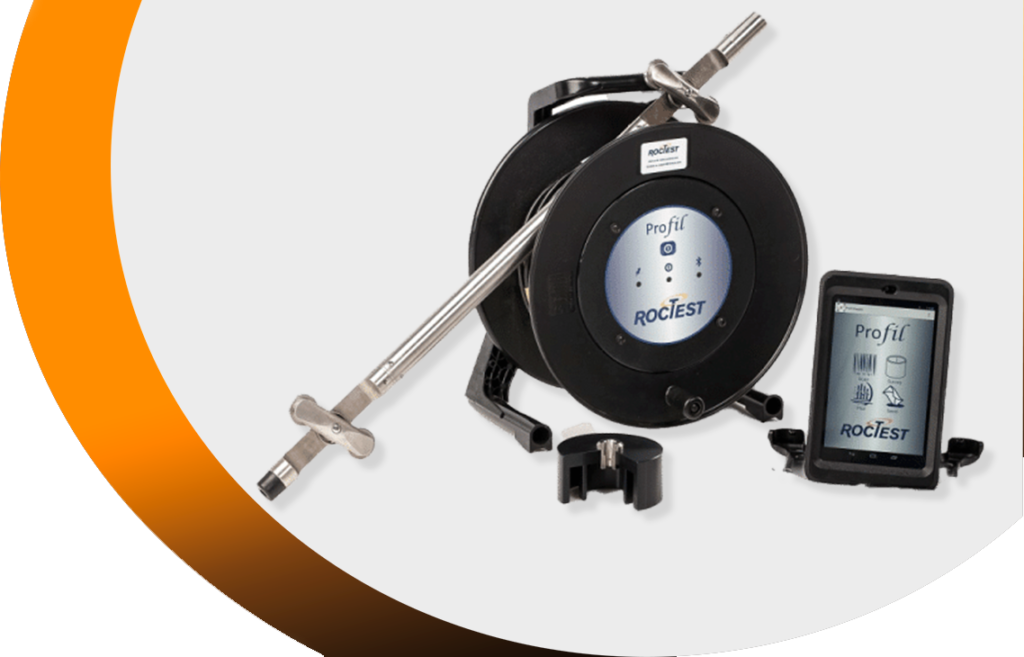Inclinometer Measurement
Inclinometer Measurement Device
Inclinometer is the most common method used to observe horizontal displacement in rock, soil, and construction engineering projects. Geoseq meticulously performs inclinometer manufacturing and measurements and regularly delivers test reports. The inclinometer allows the measurement of horizontal displacements using a measuring probe sent inside the inclinometer casing placed in a drilled hole of the required diameter. GEOSEQ ABS Inclinometer Casing are standard materials for this method. GEOSEQ ABS Inclinometer Casing maintain their shape and flexibility under high temperatures and pressure due to their high quality. Generally, ABS inclinometer casing with a diameter of 60-70 mm and a length of 3 meters are used.
However, the lengths and diameters of inclinometer casing may vary depending on the project and purpose. Standard ABS inclinometer casing should be joined with sleeves and sealed with mastic.
Inclinometer Casing
Subsequently, the sleeves should be wrapped with insulating tape to prevent the entry of cement or bentonite mortar. After completing the drilling operations to the desired depth, the drilling mud and debris in the well should be cleaned with water circulation. After the installation of the bottom cap of the GEOSEQ ABS Inclinometer Casing, it should be lowered into the well with an injection hose. The Inclinometer casing should be assembled to the well depth using sleeves, and sealing should be ensured with rivets, mastic, and insulating tape during the joining process. It is crucial to perform the assembly operations carefully and meticulously during the lowering process. Otherwise, materials that may enter the inclinometer casing can hinder the movement of the inclinometer device within the grooves. Planning and preparations must be made before starting the manufacturing process.
One of the double grooves inside the GEOSEQ Inclinometer casing should be aligned in the same direction as the expected displacement direction. This direction should be maintained throughout the manufacturing process. Injection materials (water, cement, bentonite mortar) should be prepared to have a strength close to the soil strength. If necessary, it is recommended that project engineers prepare and test trial mixtures for injection before starting manufacturing. In water-filled inclinometer bore hole, the inclinometer casing should be filled with water to prevent them from floating or to facilitate the lowering process. In dry wells without water, it is unnecessary to fill the casing with water. After completing the lowering operations, the casings should be filled with water before starting the injection process to prevent floating. Inclinometer casings should never be injected by holding them from the upper ends or pressing down on them to prevent them from floating. Otherwise, the inclinometer casings may bend against the well walls inside the well. It is essential that the inclination and groove points of the inclinometer casings remain aligned during measurements. After all these operations are completed appropriately, the injection process should be carried out from the bottom up with low-pressure injection to fill the well wall entirely. Spring centralizers can be used around the inclinometer casing to prevent such issues in large-diameter bore hole. After completing the lowering and injection operations, the inside of the casing should be cleaned by circulating water to prevent possible cement leakage. This process should be repeated the next day.
Inclinometer Stages
Generally, 1 or 2 meters of the bore hole show gaps due to settling after injection for 1-2 days. Therefore, these settled parts of the injection should be completed from above before mounting the protective covers and cages of the inclinometer. To ensure that the probe is lowered in the same direction during readings, the grooves inside the inclinometer casing should be marked and labeled. Each inclinometer probe may have different A+ A- directions depending on the brand and model. After completing all manufacturing operations, a well record form should be kept. The well record form should record the manufacturing date, well elevation and coordinates, slip direction and angle, and well name and number. To prevent foreign objects from entering the inclinometer bore hole, the wellhead should be closed with an Upper Cover. Especially for observing long-term displacements, inclinometer casings should be protected with a locked protective cage. GEOSEQ provides suitable protective cages for all inclinometer casings and produces protective cages upon request. After completing the inclinometer pipe installation processes, the injection should be allowed to reach sufficient strength. After the necessary waiting period, a zero reading (reference measurement) should be taken from the well, and the results should be recorded. Both during the zero reading and other periodic readings, ensure that the inside of the bore hole is safe. Any blockage or foreign objects thrown from outside can jam your probe. Therefore, if deemed necessary, it is recommended to test with a dummy test probe before lowering the actual inclinometer probe into the bore hole.

